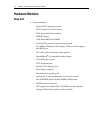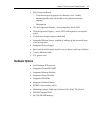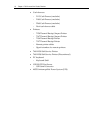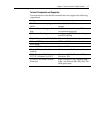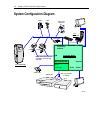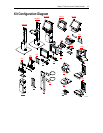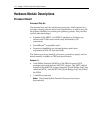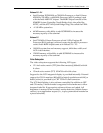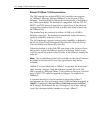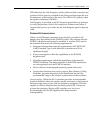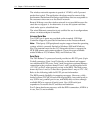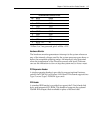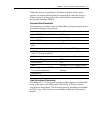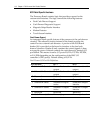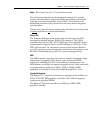
1-12 Chapter 1: 7401-2xxx and 3xxx Product Overview
Ethernet 10/100Base-T LAN Communications
The 7401 terminal has an Intel 82559 LAN Controller that supports
10/100Base-T Ethernet. Ethernet 100Base-T is also known as "Fast
Ethernet." The Boot ROM for diskless boot functionality is included in
the 1 MB system ROM. The hardware is compatible with the TCP/IP,
DHCP, and TFTP protocols required for remote boot of the platform.
Appropriate software must be used to enable each protocol used over
the Ethernet link.
The terminal may be connected to either a 10 MB/s or 100 MB/s
Ethernet connection. The hardware automatically selects the correct
speed (if enabled by software to do so).
The LAN hardware supports wakeup packet capability as defined in
the Device Class Power Management Specification, Network Device
Class (available from Microsoft's web site).
When the platform is in the Soft OFF state (refer to the Advanced Power
Management section that follows), receipt of a Wakeup Packet on the
LAN can return the system to the ON state, if this feature is enabled by
software.
Note: Due to limitations of the LAN controller and the OS, all features
described in the Network Device Class specification may not be
available.
100Base-T is wired identically to 10Base-T, except that the twisted pair
cable must be Category 5 and the hubs must permit 100 or 10/100
MB/s operation. Although 10Base-T will operate on Category 3 twisted
pair, or NCR "747" cable, an upgrade to Category 5 is required for
100Base-T.
A customer desiring to use the terminal in an existing 10Base-T
environment can do so and simply run at 10 MB. In order to upgrade to
100MB/s, Category 5 cable and 100 or 10/100 hubs must be installed.
NCR strongly recommends the use of Category 5 for all new cabling,
even if the customer initially intends to run only 10Base-T.



